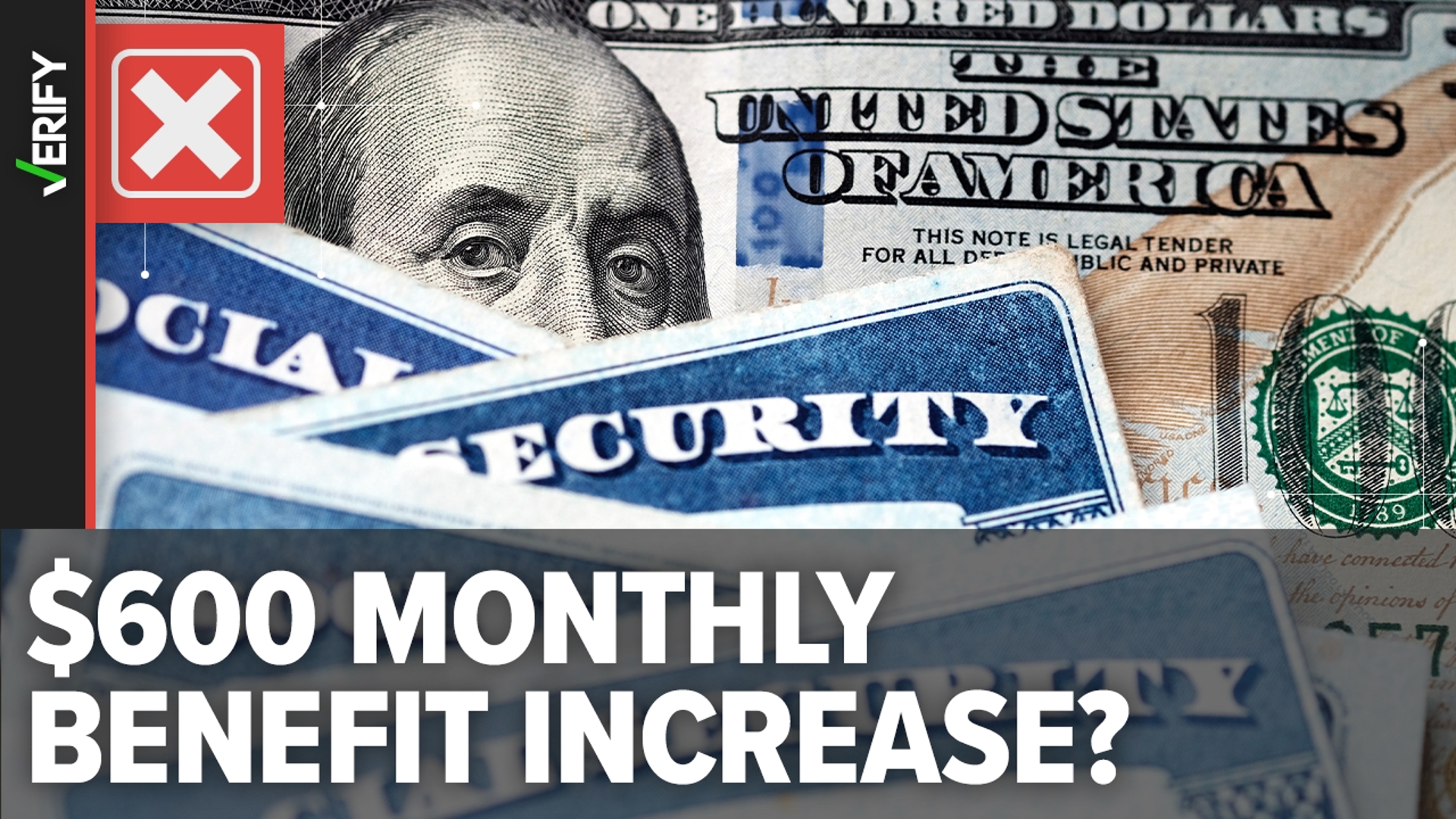Social Security is a government program that provides monthly benefit payments to retired Americans and other people who can’t work due to disability.
Several VERIFY readers, including Patricia and Melinda, reached out to ask if claims shared in online articles about Social Security recipients receiving a $600 increase to their monthly payments are true.
THE QUESTION
Are Social Security recipients getting a $600 monthly payment increase?
THE SOURCES
VERIFY analysis of an article from “PTET”
THE ANSWER
No, Social Security recipients are not getting a $600 monthly payment increase.
WHAT WE FOUND
Social Security recipients are not receiving a $600 increase to their monthly payments. The false claims stem from articles published by unreliable websites.
The Social Security Administration (SSA) says on its website that “reports of a $600 payment increase in June are false.” Congress would also have to pass a bill to increase Social Security benefits, which has not happened.
SSA told VERIFY it would notify people directly about any updates or increases to their monthly Social Security payments and announce them on its website.
Social Security recipients are unlikely to receive any increase in their benefits until January 2025 when the annual cost-of-living adjustment (COLA) takes effect. The COLA increases monthly benefit payments if inflation goes up during a certain time period.
SSA won’t announce the 2025 COLA until October 2024. Early estimates show that the 2025 COLA will likely be somewhere around 3%.
This isn’t the first time online articles have falsely claimed that Social Security recipients are getting extra money. VERIFY previously debunked claims about people on Social Security receiving federal stimulus checks in 2024.
These false articles typically are created by content farms that “regurgitate dubious information and often rely on AI-generated articles with little or no human oversight,” McKenzie Sadeghi, AI and foreign influence editor for NewsGuard, previously told AARP.
The scam articles claim to inform readers about “exclusive” or “new” benefits that don’t actually exist with the goal of drawing as many people as possible to their websites, which have numerous advertisements.
“By bringing viewers and readers to their sites, they are hoping that people will, in turn, click on these advertisements and they will gain financial revenue,” Sadeghi says.
If it’s not clear where the article is getting its information from, that’s also a red flag, Sadeghi adds.
To avoid falling for the information in these fake articles, Sadeghi recommends scanning the article for any information that doesn’t add up, as well as the unnecessary repetition of key phrases.
For example, one website that features false information regularly repeats the phrase “$600 Increase For Social Security 2024, SSI, SSDI” in bold, which is likely to draw more attention to the site from people searching for information about the false claims.
That website also has numerous grammatical errors and contains a number of external advertisements, just like AARP warned about in its article.

